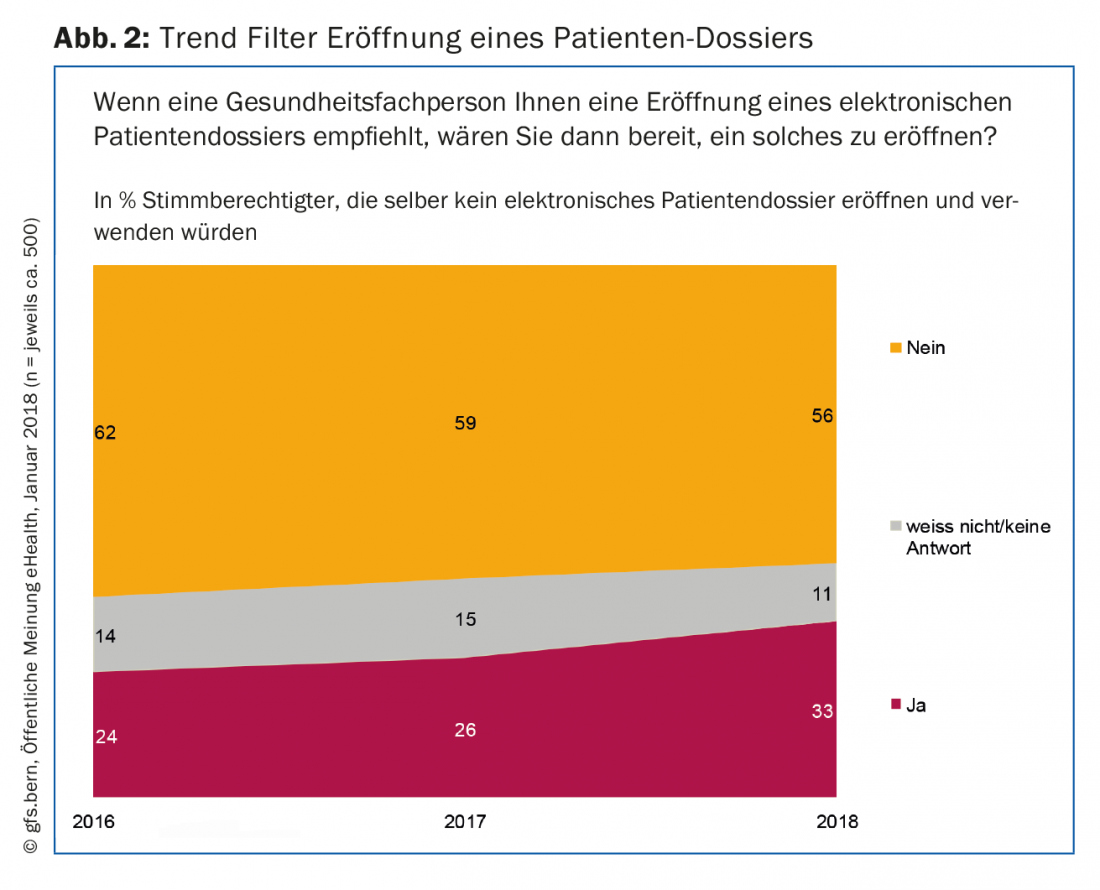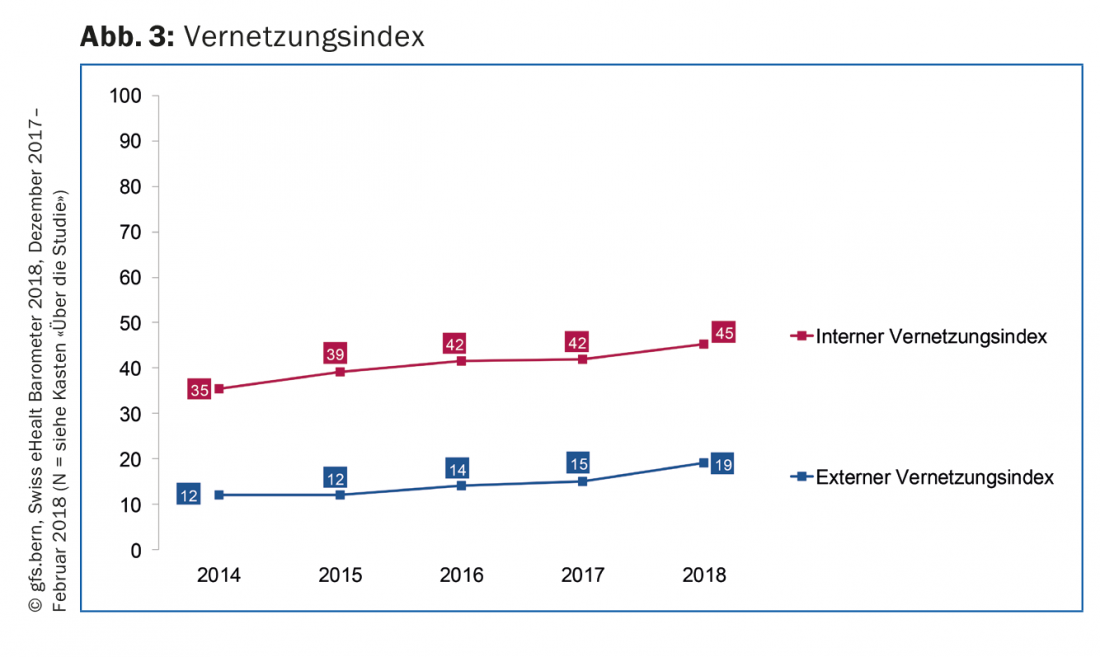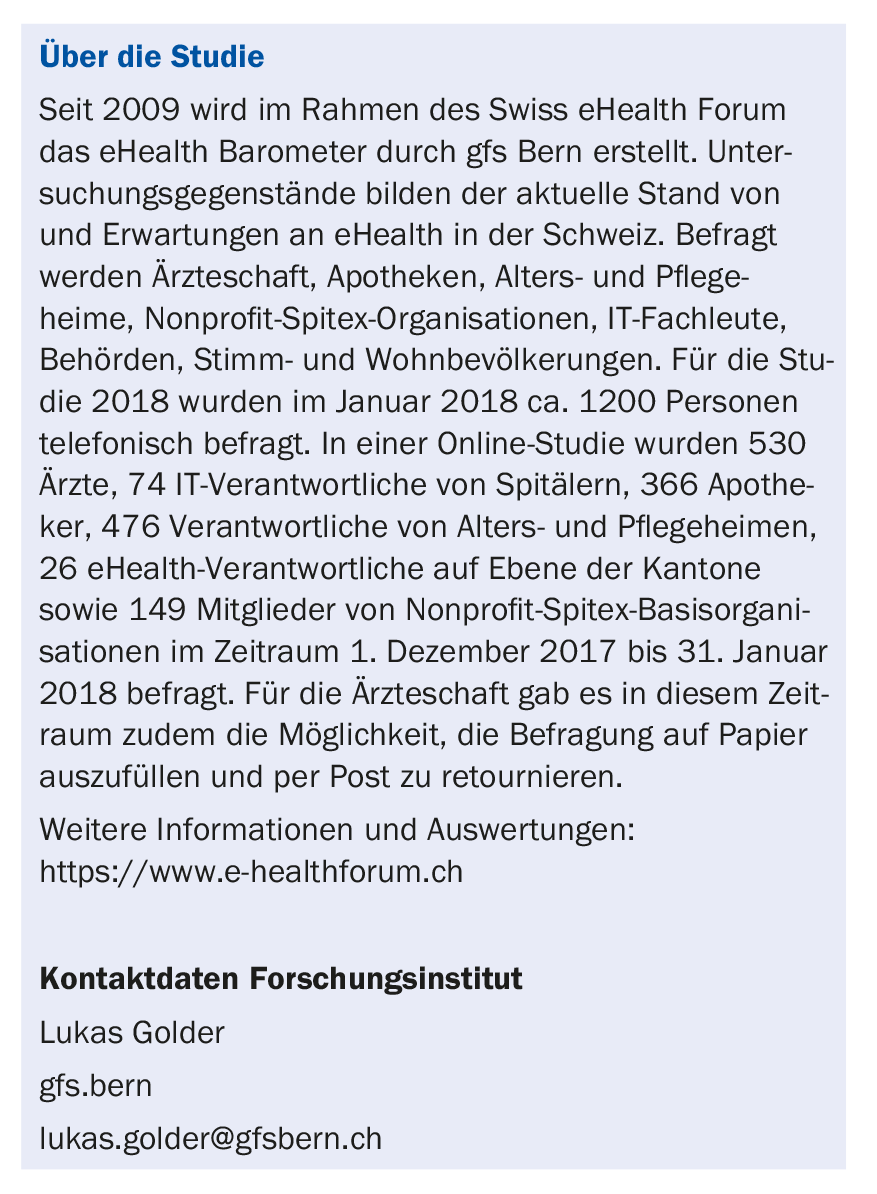The new eHealth Barometer 2018 was presented at the SWISS eHealth Forum in Bern: There is movement in the topic of digitalization of healthcare. The players are networking, the stakeholders of the Electronic Patient Dossier are open-minded.
The majority of the healthcare professionals surveyed would recommend an EPD today (Fig. 1) . Most of the healthcare providers surveyed think the EPD is a good thing, with pharmacists standing out the most, which Golder attributes to the early digitization pressure in this industry. This open-mindedness plays an important role in the success of EPD with patients. As pharmacists have refocused on their role as coaches and first responders, they have gained relevance as potentially important facilitators of EPD.

For the resident population, on the other hand, the result is somewhat different. Primarily, the EPD has not become better known over the past year, which may have to do with the waning media discussion of the topic, Golder suspects. The percentage of those in the resident population who think the EPD is a good thing in principle is 50%, and 19% even think it is a very good thing. However, when filtered by willingness to open an EPD, the number of open-minded people still currently shrinks to about one-third of the resident population (Fig. 2), with willingness higher among voters than among foreigners (33% vs. 8%). The population of French-speaking Switzerland is particularly motivated (45%) compared to German-speaking Swiss (29%) and to Italian-speaking parts of the population (23%).

The haptic driver for this development, according to Gilder, is the smartphone: the apps, which are used more widely, provide the impetus in the population, because these are very concretely applicable, while the benefit of an EPD is still a rather diffuse concept that exists only in theory. “However, a key driver is also the strategy – the EPDG. This is also the view of the cantonal eHealth managers we surveyed. In 2018, 26 cantonal managers participated in the survey. This full survey is a first.” In the meantime, the driving forces are an alliance of service providers, the cantonal authorities and parliaments. “It’s a powerful igniting effect,” Golder said.
The goal still seems a long way
The internal networking level concerns all services and information that are exchanged internally, the external ones those with service providers outside the institution. The interconnectedness index was defined on the basis of the OECD performance catalog. Internally, the index includes about half of all conceivable OECD services; thus, about 45% of the potential is being realized today across all surveyed service providers. In the hospitals surveyed, the figure is already very high at 75%. The value of the external networking index shows that there is still a long way to go to reach the target (19%) (Fig. 3).

The role of the medical profession
About three-quarters of those who could consider opening an EPD upon recommendation would prefer to receive that recommendation directly from a physician. This describes the important role of the physician as a catalyst. It is true that physicians tend to be somewhat more critical with regard to the form of the EPD and their willingness to pay. But if you ask the resident population who they would like to share their data with, the first place is always their treating physician. All other aspects in this context that are assessed as beneficial have less priority. The public is also making demands on the medical profession, such as online appointments or online consultations.
Benefit expectations and usage spiral
Interest in EPD on the part of the resident population is triggered by experience with apps for fitness and exercise. The majority knows these apps, 47% do not know them. Younger people still account for a higher proportion of app use than older people. App use is something 73% of the population can imagine or already uses. “If such use triggers positive feelings, new needs will soon arise. EPD data will certainly be accessible and usable via smartphone in the future. This will also create needs for new contexts of use,” was Golder’s optimistic forecast, and he elaborated: The study shows that there are already three positive benefit expectations among all healthcare providers and those entitled to vote, he said: Avoidance of treatment errors, avoidance of unnecessary treatment, and rapid data access for emergency treatment. The usage spiral – generating new usage expectations through positive usage experiences – will also continue to drive the use of EPD data, he said. This logic was already evident after the emergence of apps on smartphones, which are now embedded in the consumption and information behavior of their owners. The population expects insight into their own treatment information and the ability to add data themselves as well. Even if the first point is viewed somewhat more critically by the medical profession, such positive expectations of use will set in motion a spiral of innovation.
Further information and evaluations:
www.e-healthforum.ch
Contact details research institute
Luke Golder
gfs.berne
lukas.golder@gfsbern.ch
HAUSARZT PRAXIS 2018; 13(5): 37-39












